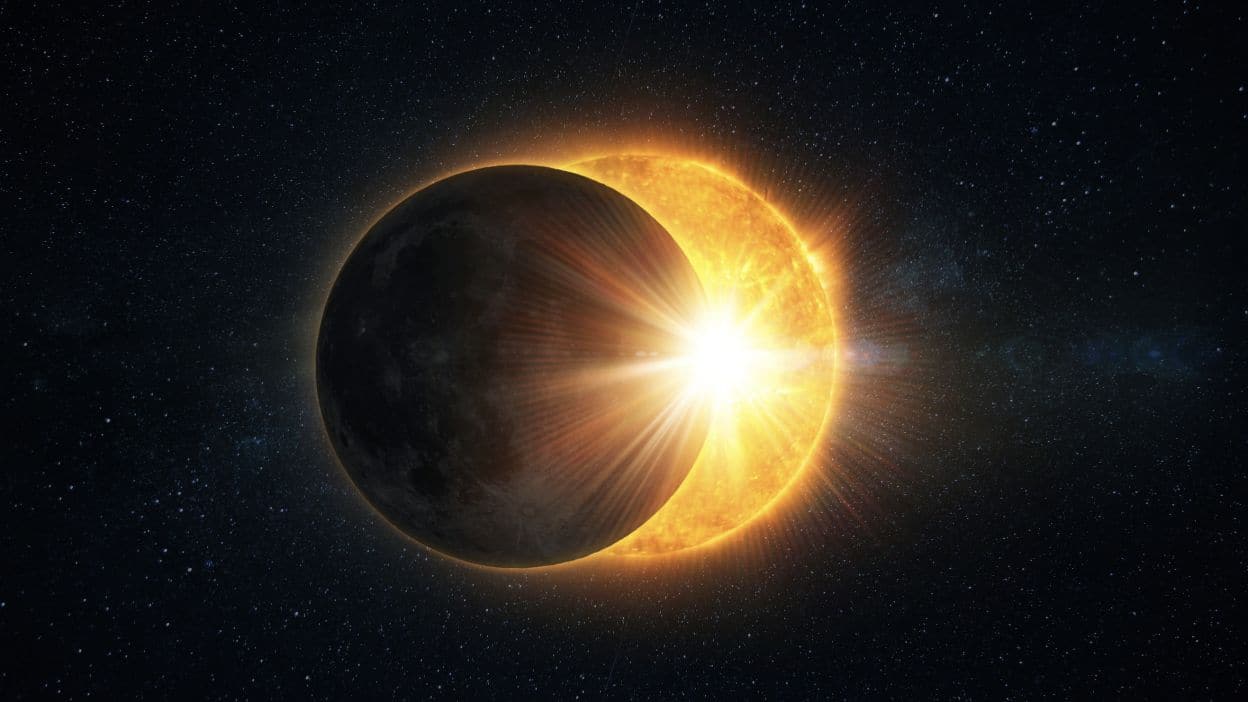
Solar eclipse on March 29—Will it be visible in India?
What's the story
The first solar eclipse of the year will occur on March 29, captivating skywatchers across various regions. This celestial event happens when the Moon passes between the Earth and the Sun, partially blocking sunlight and casting a shadow on Earth's surface. The solar eclipse will be visible from several parts of Asia, Africa, Europe, the Atlantic Ocean, the Arctic Ocean, North America, and South America. However, it won't be visible in India.
Viewing details
Visibility and safety precautions for the upcoming solar eclipse
Unlike lunar eclipses, which can be safely viewed with the naked eye, a solar eclipse requires special protective eyewear to prevent eye damage. Looking at the Sun without protection can cause retinal burns and permanent vision loss. The eclipse will start at 2:20pm IST and conclude at around 6:13pm IST. It will peak at around 4:17pm IST, according to NASA.
Zodiac effects
Astrological impact of the solar eclipse
The upcoming solar eclipse will take place in the Pisces zodiac sign, with six planets—Mercury, Venus, Saturn, Rahu, Sun, and Moon—positioned in Pisces. This unique planetary alignment is likely to have varying effects on each zodiac sign. However, as this event won't be seen in India, there will be no Sutak period (a time of restrictions followed during eclipses in Hindu traditions).
Future eclipses
Other celestial events to anticipate in 2025
NASA has predicted two solar eclipses for 2025, the second of which is expected on September 21. There will also be two lunar eclipses this year. The first lunar eclipse will take place later this week on March 14, coinciding with the Holi festival. It won't be visible from India but is sure to excite astronomy enthusiasts across the globe.